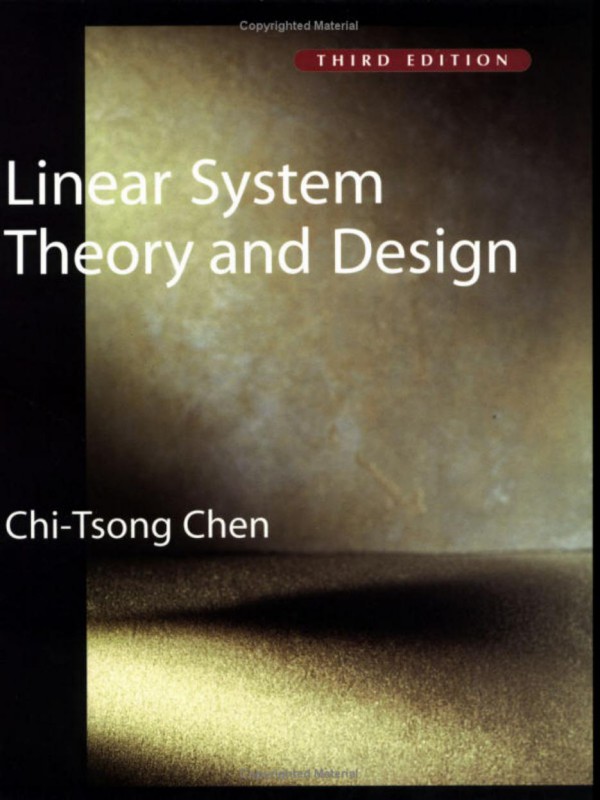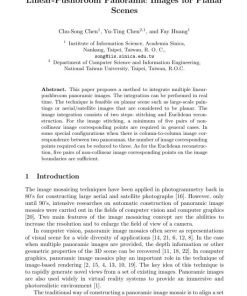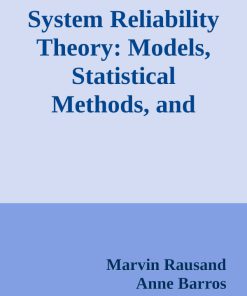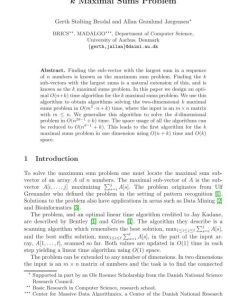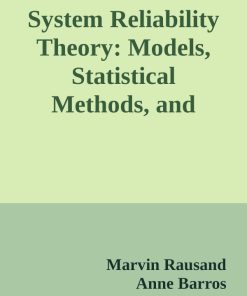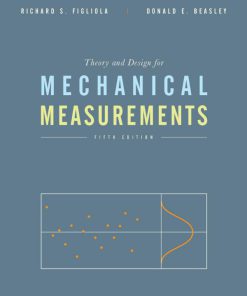Linear System Theory and Design 3rd Edition by Chi Tsong Chen 0195117778 978-0195117776
$50.00 Original price was: $50.00.$25.00Current price is: $25.00.
Authors:Chi-Tsong Chen; Professor Department Of Electrical Engineering Chi-Tsong Chen , Series:Electrical Engineering [87] , Tags:Electricity & Electronics , Author sort:Chen, Chi-Tsong & Chen, Professor Department Of Electrical Engineering Chi-Tsong , Ids:Google; 9780199964543 , Languages:Languages:eng , Published:Published:Oct 2014 , Publisher:Oxford University Press , Comments:Comments:Striking a balance between theory and applications, Linear System Theory and Design, INternational Fourth Edition, uses simple and efficient methods to develop results and design procedures that students can readily employ. Ideal for advanced underrgraduate courses and first-year graduate courses in linear systems and multivariable system design, it is also a helpful resource for practicing engineers.
Linear System Theory and Design 3rd Edition by Chi Tsong Chen – Ebook PDF Instant Download/Delivery. 0195117778, 978-0195117776
Full download Linear System Theory and Design 3rd Edition after payment
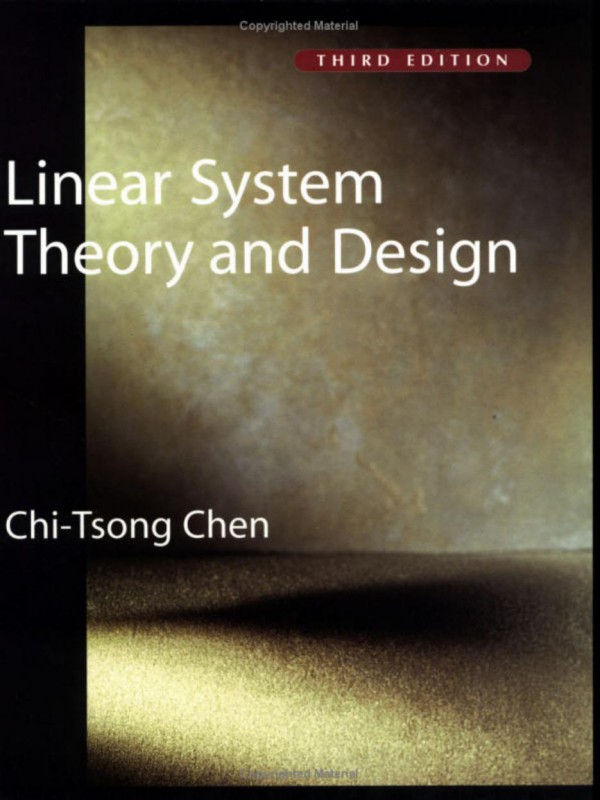
Product details:
ISBN 10: 0195117778
ISBN 13: 978-0195117776
Author: Chi-Tsong Chen
The two main objectives of the text are to:
� use simple and efficient methods to develop results and design procedures
� enable students to employ the results to carry out design
All results in this new edition are developed for numerical computation and illustrated using MATLAB, with an emphasis on the ideas behind the computation and interpretation of results. This book develops all theorems and results in a logical way so that readers can gain an intuitive understanding of the theorems. This revised edition begins with the time-invariant case and extends through the time-varying case. It also starts with single-input single-output design and extends to multi-input multi-output design. Striking a balance between theory and applications, Linear System Theory and Design, 3/e, is ideal for use in advanced undergraduate/first-year graduate courses in linear systems and multivariable system design in electrical, mechanical, chemical, and aeronautical engineering departments. It assumes a working knowledge of linear algebra and the Laplace transform and an elementary knowledge of differential equations.
Linear System Theory and Design 3rd Table of contents:
Chapter 1: Introduction
1.1 Introduction
Foundational concepts and context for the subject matter.
1.2 Overview
Summary of the chapter’s content and its significance.
Chapter 2: Mathematical Descriptions of Systems
2.1 Introduction
Basics of system modeling and mathematical frameworks.
2.1.1 Causality and Lumpedness
Discussion on causality and lumped parameter systems.
2.2 Linear Systems
Principles and characteristics of linear systems.
2.3 Linear Time-Invariant (LTI) Systems
Detailed analysis of LTI systems.
2.3.1 Op-Amp Circuit Implementation
Application of LTI concepts in operational amplifier circuits.
2.4 Linearization
Methods for linearizing nonlinear systems.
2.5 Examples
Practical examples illustrating theoretical concepts.
2.5.1 RLC Networks
Modeling and analysis of RLC circuits.
2.6 Discrete-Time Systems
Examination of systems operating in discrete time.
2.7 Concluding Remarks
Key takeaways and summary of the chapter.
Problems
Exercises to reinforce understanding.
Chapter 3: Linear Algebra
3.1 Introduction
Overview of linear algebra’s role in system analysis.
3.2 Basis, Representation, and Orthonormalization
Basics of vector spaces, orthonormalization, and basis representation.
3.3 Linear Algebraic Equations
Techniques for solving linear systems of equations.
3.4 Similarity Transformation
Simplifying matrix analysis via similarity transformations.
3.5 Diagonal Form and Jordan Form
Decomposing matrices for easier computation.
3.6 Functions of a Square Matrix
Utilizing functions to analyze square matrices.
3.7 Lyapunov Equation
Solutions to the Lyapunov equation in stability analysis.
3.8 Some Useful Formulas
Key mathematical tools and their applications.
3.9 Quadratic Form and Positive Definiteness
Analyzing quadratic forms and positive definite matrices.
3.10 Singular-Value Decomposition
Understanding singular-value decomposition and its uses.
3.11 Norms of Matrices
Definitions and applications of matrix norms.
Problems
Practice exercises for skill enhancement.
Chapter 4: State-Space Solutions and Realizations
4.1 Introduction
Overview of state-space representations and realizations.
4.2 Solution of LTI State Equations
Methods for solving state-space equations in LTI systems.
4.2.1 Discretization
Techniques for transitioning to discrete-time systems.
4.2.2 Solution of Discrete-Time Equations
Solving equations for discrete-time models.
4.3 Equivalent State Equations
Analysis of state equations with equivalent representations.
4.3.1 Canonical Forms
Representation of state equations in canonical form.
4.3.2 Magnitude Scaling in Op-Amp Circuits
Scaling techniques for operational amplifiers.
4.4 Realizations
Practical realizations of state-space models.
4.5 Solution of Linear Time-Varying (LTV) Equations
Solving equations for systems with time-variant characteristics.
4.5.1 Discrete-Time Case
Special considerations for discrete-time systems.
4.6 Equivalent Time-Varying Equations
Deriving equivalent forms for time-varying systems.
4.7 Time-Varying Realizations
Implementing realizations for time-varying systems.
Problems
Exercises to deepen understanding.
Chapter 5: Stability
5.1 Introduction
Key concepts in system stability.
5.2 Input-Output Stability of LTI Systems
Analyzing stability in input-output relationships.
5.2.1 Discrete-Time Case
Addressing stability in discrete-time systems.
5.3 Internal Stability
Discussion on internal system stability.
5.3.1 Discrete-Time Case
Discrete-time considerations for internal stability.
5.4 Lyapunov Theorem
Application of the Lyapunov theorem in stability analysis.
5.4.1 Discrete-Time Case
Lyapunov stability for discrete systems.
5.5 Stability of LTV Systems
Stability considerations for time-varying systems.
Problems
Practice problems for stability analysis.
Chapter 6: Controllability and Observability
6.1 Introduction
Overview of system controllability and observability.
6.2 Controllability
Analyzing the controllability of dynamic systems.
6.2.1 Controllability Indices
Metrics for assessing controllability.
6.3 Observability
Exploring the observability of systems.
6.3.1 Observability Indices
Metrics for measuring observability.
6.4 Canonical Decomposition
Decomposing systems into canonical forms.
6.5 Conditions in Jordan-Form Equations
Constraints in Jordan-form representations.
6.6 Discrete-Time State Equations
Special considerations for discrete-time models.
6.6.1 Controllability to the Origin and Reachability
Specific scenarios in discrete-time controllability.
People also search for Linear System Theory and Design 3rd:
linear system theory and design 4th edition solution manual
linear system theory and design 4th edition solution manual pdf
linear system theory and design solution manual pdf
linear system theory and design third edition
You may also like…
eBook PDF
Electrical Circuit Theory and Technology 3rd Edition by John Bird 075068139X 978-0750681391

